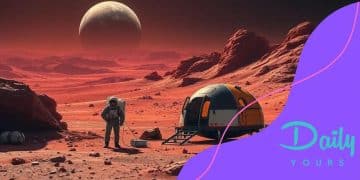The role of technology in addressing global food security issues

Anúncios
The role of technology in addressing global food security issues involves collaboration among stakeholders, utilizing innovations in sustainable farming, and optimizing food distribution through advanced technologies to ensure access to nutritious food for all.
The role of technology in addressing global food security issues is becoming increasingly vital as we navigate complex challenges in feeding a growing population. Have you ever wondered how innovation can transform our food systems? In this article, we’ll explore the technological solutions paving the way for a more secure future.
Anúncios
Understanding global food security challenges
Global food security challenges affect millions worldwide. Understanding these issues is essential for finding effective solutions. Factors like climate change, population growth, and economic disparities all play a role in food accessibility.
Key Factors Impacting Food Security
Several critical factors contribute to food insecurity across the globe. By recognizing these elements, we can better address the problems:
- Climate Change: Changes in weather patterns can disrupt agricultural production.
- Population Growth: An increasing population demands more food and resources.
- Economic Disparities: Wealth gaps affect access to food and agricultural investments.
- Conflict and Instability: War and unrest hinder food distribution channels.
Each of these factors requires attention. For instance, climate change has resulted in unpredictable growing seasons, making it difficult for farmers to plan. Additionally, economic disparities mean that even when food is available, many people cannot afford to purchase it.
Anúncios
The Role of Infrastructure
Infrastructure is another crucial aspect of food security. Reliable transportation networks allow farmers to bring their products to market. Without proper roads and storage facilities, food can spoil before reaching consumers. Additionally, technology plays a role in improving supply chains and logistics.
Education and resources for farmers are equally important. By empowering farmers with knowledge about sustainable practices, we can enhance productivity and resilience against challenges. Moreover, community support through organizations can strengthen local food systems and enhance food sovereignty.
Addressing global food security is not just about increasing production. It’s about ensuring that everyone has access to safe and nutritious food. Collaboration among governments, NGOs, and private sectors is vital to create sustainable solutions. With combined efforts, we can make strides in securing food for the future.
Technological advancements in agriculture
Technological advancements in agriculture are transforming the way we produce food. These innovations help farmers increase efficiency, reduce waste, and adapt to climate change. By leveraging technology, the agriculture sector can meet the demands of a growing population while promoting sustainability.
Modern Farming Techniques
Many modern farming techniques utilize technology to improve crop yields and resource management. For instance, precision agriculture uses GPS and IoT devices to monitor field variability and manage soil conditions more effectively. This helps farmers apply the right amounts of water, fertilizers, and pesticides exactly where needed.
- Drones: Drones are used to survey crops, assess plant health, and monitor irrigation systems.
- Sensor Technology: Soil sensors measure moisture and nutrients, allowing for informed decision-making.
- Automated Machinery: Tractors and harvesters equipped with advanced robotics can work autonomously, reducing labor costs.
These advancements create a more sustainable and productive farming environment. With the ability to monitor and analyze data in real-time, farmers can make better choices that benefit their crops and the environment.
Innovation in Crop Management
Innovation in crop management is essential for addressing challenges such as pest control and disease management. For example, biotechnology helps create crops that are resistant to pests and diseases. Additionally, data analytics allows farmers to predict outbreaks and implement preventative measures.
The integration of technology encourages the development of sustainable practices as well. By understanding how crops interact with their environment, farmers can optimize planting schedules and reduce resource consumption. This not only boosts productivity but also protects natural ecosystems.
Moreover, connecting farmers to local markets through technology helps reduce food waste by ensuring fresh produce reaches consumers quickly. Overall, the role of technology in agriculture is crucial for achieving food security in a rapidly changing world.
The impact of AI on food distribution

The impact of AI on food distribution is significant and transformative. AI technologies are streamlining processes, reducing waste, and improving efficiency in getting food from farms to consumers. By leveraging data and automation, food distribution systems can operate more effectively.
Optimizing Supply Chains
AI plays a crucial role in optimizing supply chains. By analyzing vast amounts of data, AI can predict demand patterns. This helps suppliers adjust their inventory levels, ensuring that food is available when and where it is needed. For instance, using machine learning algorithms, companies can forecast which products will be in demand during specific seasons.
- Dynamic Routing: AI can calculate the best routes for delivery trucks, reducing travel time and fuel consumption.
- Inventory Management: Smart systems can alert suppliers when stock is running low, allowing for timely restocking.
- Warehouse Automation: Robotics powered by AI can pick and pack products quickly and accurately.
Furthermore, AI enhances communication among suppliers, distributors, and retailers. By sharing real-time information, all parties can make informed decisions, reducing the chances of food spoilage and waste in the supply chain.
Improving Food Safety
AI is also making strides in improving food safety. With advanced tracking systems, food can be monitored throughout its journey. If contamination occurs, AI can quickly trace the source and provide critical information to local authorities.
Additionally, machine learning systems can analyze data from various food safety inspections. By identifying patterns in contamination sources and types, these technologies help companies implement more effective safety measures.
As AI continues to evolve, its influence on food distribution will only grow. Innovative solutions will drive efficiency and safety, ensuring that fresh and quality food reaches consumers in a timely manner.
Innovations in sustainable farming practices
Innovations in sustainable farming practices are vital for addressing food security and environmental challenges. These advancements not only increase productivity but also reduce the negative impact on the planet. By focusing on sustainability, farmers can protect natural resources while meeting the growing food demands.
Eco-Friendly Techniques
Many farmers are adopting eco-friendly techniques that use fewer chemicals and promote soil health. For example, crop rotation helps maintain soil fertility by alternating different crops in the same area. This method reduces pest populations and breaks cycles of soil nutrient depletion.
- Cover Cropping: Planting cover crops, such as clover or rye, during off-seasons protects the soil from erosion and improves its quality.
- Organic Farming: This method avoids synthetic fertilizers and pesticides, relying on natural processes to grow crops.
- Integrated Pest Management: This approach combines biological control, crop management, and chemical solutions only when necessary.
By employing these methods, farmers can produce healthier food while safeguarding the environment.
Technology in Sustainable Farming
Technology plays a crucial role in modern sustainable farming. Innovations like drip irrigation conserve water by delivering it directly to the plant roots, minimizing waste. Additionally, precision agriculture tools allow farmers to apply resources like fertilizers and water precisely where needed, reducing excess usage.
Data analytics and AI are also shaping sustainable practices by helping farmers make informed decisions based on weather patterns, soil health, and crop needs. This data-driven approach leads to better planning and resource management. As such, farmers can increase yields without expanding their land use.
Furthermore, community-supported agriculture (CSA) connects consumers with local farmers. This model promotes sustainability by encouraging the purchase of fresh, seasonal foods directly from farms, reducing transportation emissions.
Collaborative efforts for food security solutions
Collaborative efforts for food security solutions involve various stakeholders working together to ensure everyone has access to safe and nutritious food. These collaborations can take many forms, such as partnerships between governments, non-profit organizations, and the private sector. When combined, their resources and expertise create a more impactful approach to solving food insecurity.
Government Initiatives
Governments play a crucial role in fostering food security. They develop policies that support local farmers and promote sustainable practices. Initiatives like farm subsidies and funding for research into agricultural innovations help boost production.
- Food Assistance Programs: Programs such as SNAP and WIC provide critical resources for low-income families.
- Local Food Governments: These initiatives encourage communities to source food from local farms, strengthening local economies.
- Food Policy Councils: These councils unite community members to discuss food access and sustainability issues.
By supporting local agriculture, governments can help reduce dependency on imported food and enhance regional food systems.
Non-Profit Organizations’ Role
Non-profit organizations are essential players in the fight against hunger. They work on the ground to distribute food, conduct outreach, and provide education. By collaborating with local farmers, they ensure fresh produce reaches those in need.
Programs like community gardens and food recovery initiatives can minimize food waste. These organizations connect surplus food from suppliers with local food banks, providing meals for underserved populations.
Moreover, educational programs offered by non-profits teach communities about nutrition and cooking, empowering them to make healthier choices. This holistic approach addresses food security beyond just food distribution.
By fostering collaboration between governments, non-profits, and private entities, we can build resilient food systems that ensure everyone has enough to eat. These efforts not only improve access to food but also promote sustainability and community well-being.
FAQ – Frequently Asked Questions about Food Security Solutions
What is the role of collaboration in improving food security?
Collaboration among governments, non-profits, and private sectors is essential for developing effective food security solutions that combine resources and expertise.
How can sustainable farming practices help with food security?
Sustainable farming practices help maintain natural resources, reduce environmental impact, and increase productivity, ensuring a reliable food supply for communities.
What technologies are being used to enhance food distribution?
Technologies like AI, drones, and precision agriculture tools optimize supply chains, making food distribution more efficient and reducing waste.
Why is community engagement important in addressing food security?
Community engagement fosters awareness and action, empowering local populations to participate in food systems and ensuring access to nutritious food.





